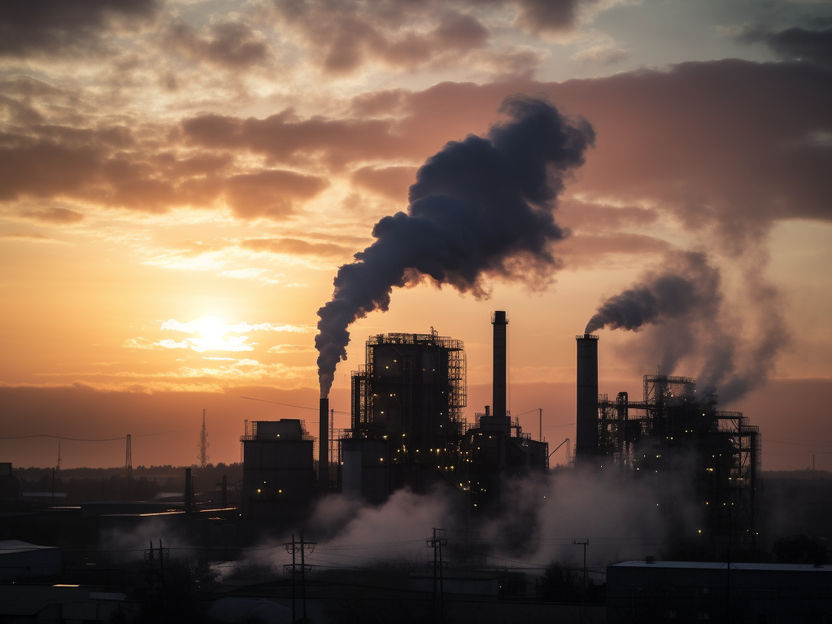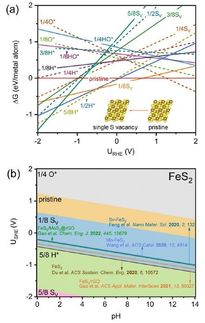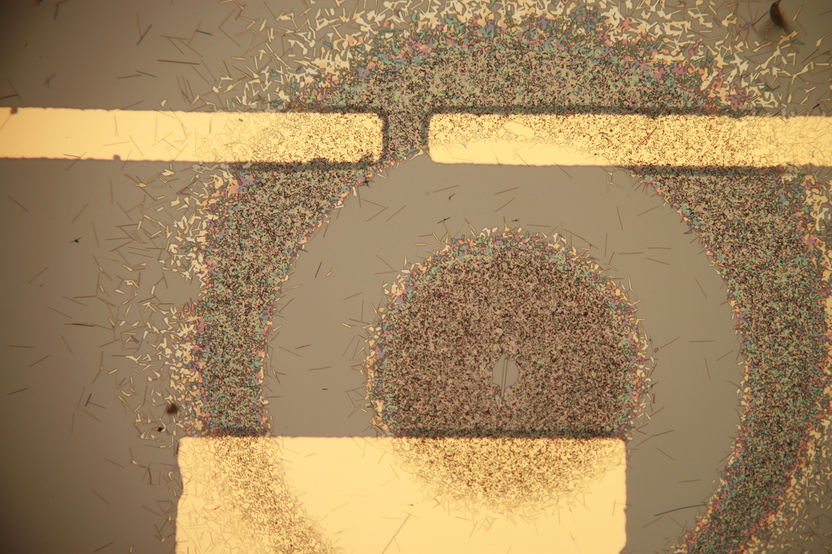New catalyst transforms carbon dioxide into sustainable byproduct
Researchers create acetic acid out of carbon monoxide derived from captured carbon
Advertisement
The need to capture CO2 and transport it for permanent storage or conversion into valued end uses is a national priority recently identified in the Bipartisan Infrastructure Law to move toward net-zero greenhouse gas emissions by 2050.

Northwestern researchers have worked with an international team of collaborators to create acetic acid out of carbon monoxide derived from captured carbon (symbolic image).
Computer-generated image
Now, Northwestern University researchers have worked with an international team of collaborators to create acetic acid out of carbon monoxide derived from captured carbon. The innovation, which uses a novel catalyst created in the lab of professor Ted Sargent, could spur new interest in carbon capture and storage.
“Carbon capture is feasible today from a technical point of view, but not yet from an economic point of view,” Sargent said. “By using electrochemistry to convert captured carbon into products with established markets, we provide new pathways to improving these economics, as well as a more sustainable source for the industrial chemicals that we still need.” The paper was published (May 3) in the journal Nature.
Sargent, the paper’s corresponding author, is Northwestern’s Lynn Hopton Davis and Greg Davis Professor of Chemistry at the Weinberg College of Arts and Sciences and a professor of electrical and computer engineering at the McCormick School of Engineering. His team has a track record of using electrolyzers — devices in which electricity drives a desired chemical reaction forward — to convert captured carbon into key industrial chemicals, including ethylene and propanol.
Though acetic acid may be most familiar as the key component in household vinegar, recent University of Toronto Ph.D. recipient Josh Wicks, one of the paper’s four co-lead authors, said this use accounts for only a small proportion of what it’s used for.
“Acetic acid in vinegar needs to come from biological sources via fermentation because it’s consumed by humans,” Wicks said. “But about 90% of the acetic acid market is for feedstock in the manufacture of paints, coatings, adhesives and other products. Production at this scale is primarily derived from methanol, which comes from fossil fuels.”
Lifecycle assessment databases showed the team that for every kilogram of acetic acid produced from methanol, the process releases 1.6 kg of CO2.
Their alternative method takes place via a two-step process: first, captured gaseous CO2 is passed through an electrolyzer, where it reacts with water and electrons to form carbon monoxide (CO). Gaseous CO is then passed through a second electrolyzer, where another catalyst transforms it into various molecules containing two or more carbon atoms.
“A major challenge that we face is selectivity,” Wicks said. “Most of the catalysts used for this second step facilitate multiple simultaneous reactions, which leads to a mix of different two-carbon products that can be hard to separate and purify. What we tried to do here was set up conditions that favor one product above all others.”
Vinayak Dravid, another senior author on the paper and the Abraham Harris Professor of Materials Science and Engineering, is the founding director of the Northwestern University Atomic and Nanoscale Characterization (NUANCE) Center, which allowed the team to access diverse capabilities for atomic- and electronic-scale measurements of materials.
“Modern research problems are complex and multifaceted and require diverse yet integrated capabilities to analyze materials down to the atomic scale,” Dravid said. “Colleagues like Ted present us with challenging problems that stimulate our creativity to develop novel ideas and innovative characterization methods”.
The team’s analysis showed that using a much lower proportion of copper (approximately 1%) compared with previous catalysts would favor the production of just acetic acid. It also showed that elevating the pressure to 10 atmospheres would enable the team to achieve record-breaking efficiency.
In the paper, the team reports a faradic efficiency of 91%, meaning that 91 out of every 100 electrons pumped into the electrolyzers end up in the desired product — in this case, acetic acid.
“That’s the highest faradic efficiency for any multi-carbon product at a scalable current density we’ve seen reported,” Wicks said. “For example, catalysts targeting ethylene typically max out around 70% to 80%, so we’re significantly higher than that.”
The new catalyst also appears to be relatively stable: while the faradic efficiency of some catalysts tend to degrade over time, the team showed that it remained at a high level of 85% even after 820 hours of operation.
Wicks hopes that the elements that led to the team’s success — including a novel target product, a slightly increased reaction pressure, and a lower proportion of copper in the catalyst — inspire other teams to think outside the box.
“Some of these approaches go against the conventional wisdom in this field, but we showed that they can work really well,” he said. “At some point, we’re going to have to decarbonize all the elements of chemical industry, so the more different pathways we have to useful products, whether it’s ethanol, propylene or acetic acid, the better.”

























































